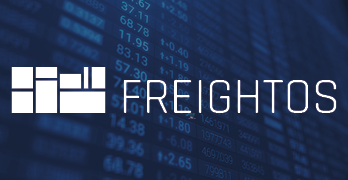FBX Index March: Market Summary

Despite the war in Ukraine and COVID lockdowns in China, the Freightos Baltic Global index was largely stable in March, decreasing 4% to $9,443/FEU, still 116% higher than a year ago and more than 6X the pre-pandemic norm. The slight aggregate decline, though, masks divergent trends on different lanes driven by the latest disruptions.
The mid-month COVID lockdowns in Shanghai and Shenzhen had many expecting a repeat of the impacts from the outbreak at the port of Yantian last May. Delays and congestion around Shenzhen surged and by June 2021 ocean rates had spiked more than 20% to Europe and the US.
Likewise, it was feared that ripples from the war in Ukraine – including rising fuel costs, carrier boycotts, and rail to sea conversions – would worsen operations in Europe and put upward pressure on ocean rates as well.
But so far, neither development has been reflected in increases in ex-Asia prices.
China’s strategy of enacting strict containment measures alongside efforts to keep the economy and trade as intact as possible meant that the ports in Shanghai and Shenzhen operated throughout the lockdowns. The availability of goods from a drop in manufacturing, disruptions to trucking, and some decrease in available workforce did lead to some slowdown at ports and an increase in waiting ships and wait times. However, not to the degree seen from the outbreak among Yantian’s port workers last year.
And even combined with the added congestion caused by Russian containers diverted to European hubs and some Asia-Europe ocean capacity claimed by rail volumes, the slowdown in China was not enough to reverse the inflation-driven decline in Asia Northern Europe demand and rates that started early this year.
Asia to Northern Europe spot rates had plateaued at about $15,000/FEU from this past August until the end of January. But since then, rising oil prices and inflation have likely dampened demand, and prices have fallen 18% to $12,050/FEU - the lowest level since July. Reports of carriers blanking upcoming Asia - Europe sailings confirm this decrease in demand.
Asia to Northern Europe spot rates had plateaued at about $15,000/FEU from this past August until the end of January. But since then, rising oil prices and inflation have likely dampened demand, and prices have fallen 18% to $12,050/FEU - the lowest level since July. Reports of carriers blanking upcoming Asia - Europe sailings confirm this decrease in demand.
The disruptions in China likewise were not enough to push transpacific rates up. But despite some signs that consumer spending may be ebbing and some reduction in congestion at LA/Long Beach, prices remain extremely elevated. Asia_US West Coast rates fell 2% to $15,811/FEU since last month, but are up 8% since the start of the year, are 168% higher than a year ago and are more than 10X pre-pandemic norms.
Projections of no significant dip in volumes in the coming months show demand remains strong and continues to drive rate levels. Lessons learned from delays during last year’s peak season, as well as fears of a strike-driven slowdown when the West Coast dockworkers’ labor contract expires at the end of June, may be driving importers to pull some volumes forward to the coming months.
Projections of no significant dip in volumes in the coming months show demand remains strong and continues to drive rate levels. Lessons learned from delays during last year’s peak season, as well as fears of a strike-driven slowdown when the West Coast dockworkers’ labor contract expires at the end of June, may be driving importers to pull some volumes forward to the coming months.
Asia US East Coast prices dipped 3% to $17,638/FEU. Some of the increase in services, demand and volumes projected to the East Coast – as well as growing congestion there – can also be attributed to shippers looking to avoid West Coast disruptions.
Meanwhile, Northern Europe - North America East Coast rates climbed 18% since the end of February to a new high of $8,139/FEU, nearly quadruple the price a year ago. Strong demand and growing congestion at both origin and destination ports are likely driving rate increases.
Price climbs on lower-volume lanes like the transatlantic that began about a year ago were partly driven by carriers moving capacity to ex-Asia routes as congestion worsened and rates spiked on these major lanes. But with carriers blanking Asia - Europe sailings due to falling demand, there is speculation that some capacity could now be moved back to the transatlantic.
About Judah Levine, Research Lead, Freightos
Judah is an experienced market research manager, using data-driven analytics to deliver market-based insights. Judah produces the Freightos Group's FBX Weekly Freight Update and other research on what's happening in the industry from shipper behaviors to the latest in logistics technology and digitization.
Receive monthly container market reports direct to your inbox.